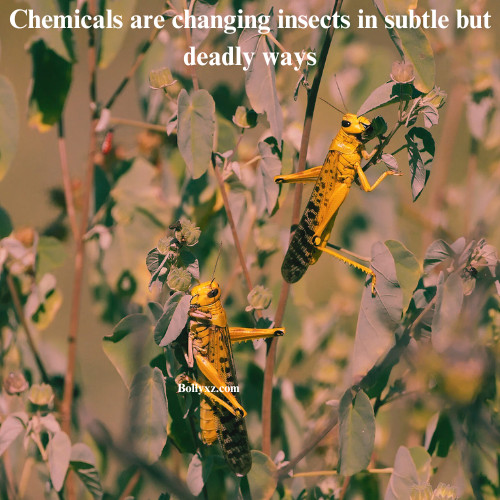Although insects like mosquitoes and bedbugs may not be to many people’s taste, they play an essential role in maintaining the balance of Earth’s ecosystems.
E.O. Wilson, a renowned biologist, once emphasized their importance by stating that if insects were to disappear, the environment could disintegrate.
However, scientists have recently detected a decline in insect populations, with their numbers declining by 2-3% annually, along with changes in their behavior.
This decline has led researchers to investigate possible causes, including habitat loss, climate change, and the effects of chemicals.
Effects of agrochemicals on insects
A study led by researchers at the European Molecular Biology Laboratory (EMBL) sought to understand how insecticides, herbicides, and other agrochemicals influence insect populations.
Using more than 1,000 chemical compounds from EMBL’s proprietary chemical library, they systematically exposed fruit fly larvae to assess changes in their development, behavior, and survival at some point in their life cycle.
The research found that 57% of the chemicals examined significantly altered the behavior of fruit fly larvae, even when the doses were not lethal. At higher levels of exposure, the flies’ long-term survival was further compromised.
“We found that when we exposed larvae to very low doses of chemical compounds, the exposure-induced considerable changes in the physiological processes that are at the heart of how they grow and behave,” said lead author Lautaro Gandara, a postdoctoral fellow at EMBL.
Rising temperatures, chemical compounds, and insects
The researchers also tested the effects of rising temperatures on these changes, simulating global warming trends. To assess the effect of temperature, the group progressively increased the temperature of the growth environment, starting at 25°C (77°F) and raising it to 29°C (84.2°F). At this higher temperature, they discovered a more noticeable effect on the larvae.
“In addition, we mixed in some of the most commonly detected airborne chemical compounds, at ecologically relevant doses, by re-exposing the fruit flies from the time they hatched. We then noticed a much stronger effect,” said lead author Justin Crocker, a biologist at EMBL.
Neurological and physiological alterations
These effects included a 60% reduction in egg-laying rates and the appearance of altered behaviors such as “hunching”.
Hunching, where larvae hunch their bodies excessively, can indicate stress or toxicity and may be a factor in underlying neurological or physiological alterations.
“At first glance, hunching may seem inconsequential, but even small changes in behavior can impact health if they negatively affect feeding, mating, and migration,” Crocker explained.
While the relationship between hunching and reduced egg-laying remains unclear, it is highly likely that larvae troubled by such behaviors may struggle to thrive in the wild.
Chemical effect on insect behavior
The study involved the collaboration of several scientists, including Jean-Baptiste Masson and François Laurent of the Pasteur Institute, who provided AI-based tools to study the behavioral changes.
Other partners included the medical faculty of the University of Heidelberg and George Washington University, where the experiments were multiplied to mosquitoes and female-painted lady butterflies.
These efforts helped confirm that similar patterns emerged across different insect species, reinforcing the study’s conclusions.
“Insects, even those that may seem like pests, are important to the planet. “They pollinate the flowers we eat and are an essential part of the food web,” Gandara said.
The studies shed light on how even low doses of chemical compounds can noticeably affect insect behavior and survival. This deeper understanding offers a clearer picture of the challenges insects face and the factors contributing to their decline.
Broader implications of the research
The study’s findings have major implications for the health and balance of the technological environment.
As insect populations decline, genetic diversity decreases, making it difficult for species to adapt to environmental changes. This threatens not only the
This knowledge should inform regulatory practices and industry tactics that better protect human health and the environment.
By understanding the diffuse but critical ways in which chemicals affect insects, scientists can help create a more balanced approach to pesticide use, to achieve practices that favor the health of these important creatures.

